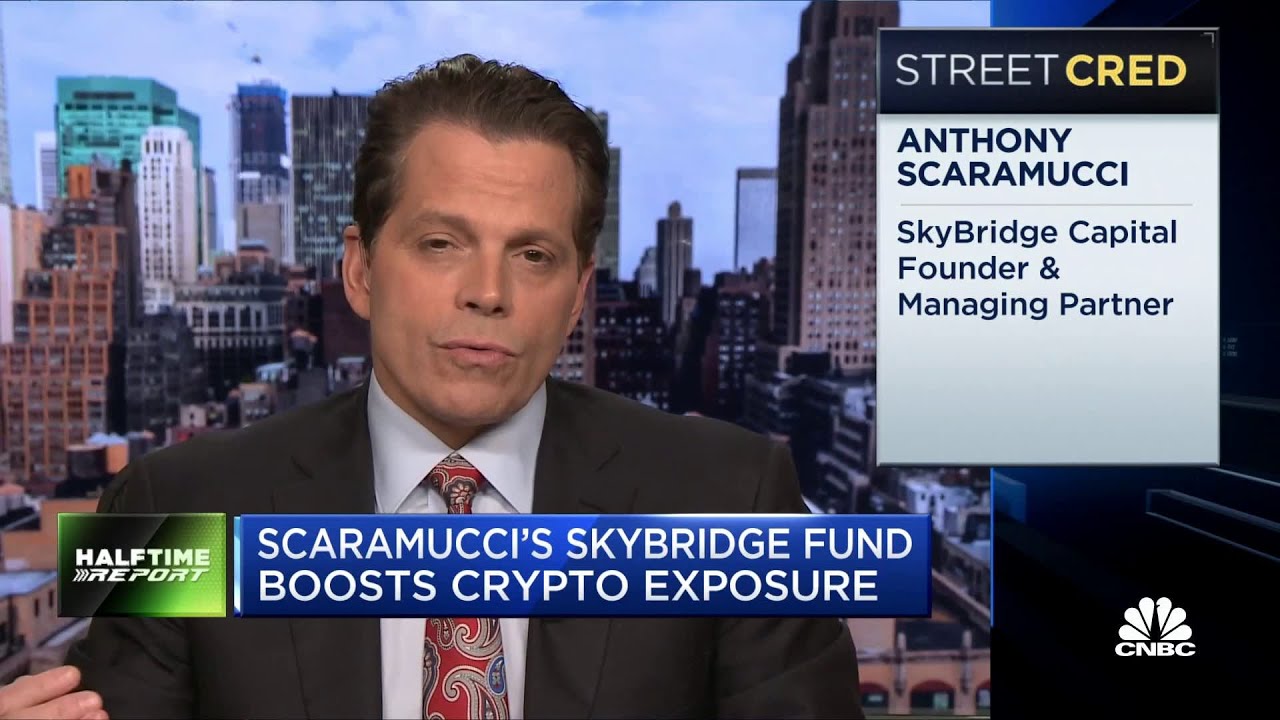Loans primarily based on cryptocurrencies have turn into a mainstay of the decentralized finance (DeFi) universe ever because the good contract-based lending/borrowing platforms started providing the service to crypto customers. The Ethereum community, the primary blockchain that scaled the good contract performance, sees a lot of the complete worth locked (TVL) on DeFi protocols dominated by cryptocurrency lending platforms.
Based on information from DeFi Pulse, the highest 4 of 10 DeFi protocols are lending protocols that account for $37.04 billion in TVL, simply 49% of TVL of all the DeFi market on the Ethereum blockchain. Ethereum leads when it comes to being probably the most utilized blockchain for the DeFi market and the TVL on the community. Maker and Aave are the most important gamers right here, with a TVL of $14.52 billion and $11.19 billion, respectively.
Even on different blockchain networks like Terra, Avalanche, Solana and BNB Chain, the adoption of cryptocurrency-based loans has been one of many primary use instances of good contracts on the earth of DeFi. There are about 138 protocols that present crypto loan-based companies to customers, amounting to a complete TVL of $50.66 billion, according to DefiLlama. Aside from Aave and Maker, the opposite distinguished gamers on this protocol class throughout blockchain networks are Compound, Anchor Protocol, Venus, JustLend, BENQI and Solend.
Johnny Lyu, the CEO of crypto alternate KuCoin, talked to Cointelegraph in regards to the alternative of blockchain networks for crypto lending. He stated:
“I’d say the best blockchain for loans and DeFi doesn’t exist, as every has its personal benefits. On the similar time, the management of Ethereum is simple because of many components.”
Nonetheless, he didn’t negate the potential for the emergence of a really best blockchain for DeFi. Kiril Nikolov, DeFi strategist at Nexo — a cryptocurrency lending platform — seconded this view. He advised Cointelegraph:
“The quick reply is ‘no.’ Most blockchains are crypto lending-friendly. Nonetheless, among the many main properties to observe for are liquidity and reliability, whereas a secondary figuring out issue is perhaps community charges.”
Contemplating that the liquidity and reliability of the Ethereum platform are the very best proper now because of it being probably the most utilized blockchain inside DeFi, one may think about making the most of the identical and making it the blockchain of alternative.
Distinguished gamers
To start out with, a borrower wants to decide on between the main lending protocols on the community reminiscent of Maker, Aave and Compound. Whereas there are a plethora of crypto lending platforms, on this piece, probably the most distinguished ones are thought of for the sake of ease of explaining and relatability.
Cryptocurrency lending basically allows customers to borrow and lend digital property in return for a price or an curiosity. Debtors must deposit collateral that may immediately enable them to take a mortgage and use it for the targets of their portfolio. You’ll be able to take loans with none collateral, often called flash loans, on platforms like Aave. These loans must be paid again throughout the similar block transaction and are primarily a function meant for builders as a result of technical experience required to execute them. Moreover, if the loaned quantity isn’t returned plus the curiosity, the transaction is canceled even earlier than it’s validated.
Since crypto-based loans are fully automated and easy for the typical retail investor and market individuals, on the whole, they supply a straightforward approach to earn annual share yields on the digital property they’re hodling and even accessing low cost credit score strains.
One essential facet of collateralized loans is the mortgage to worth (LTV) ratio. LTV ratio is the measurement of the mortgage stability in relation to the worth of the collateral asset. Since cryptocurrencies are thought of to be extremely unstable property, the ratio is normally on the decrease finish of the spectrum. Contemplating Aave’s present LTV for Maker (MKR) is 50%, it basically means which you can borrow solely 50% of the worth as a mortgage in relation to the collateral deposited.
This idea exists to supply shifting room for the worth of your collateral in case it decreases. This ends in a margin name the place the consumer is requested to replenish the collateral. In case you fail to take action and the worth of the collateral falls beneath the worth of your mortgage or one other predefined worth, your funds might be offered or transferred to the lender.
The extent of the impression of cryptocurrency-based loans reaches out of the DeFi market because it allows entry to capital for people or entities and not using a credit score examine. This brings a mass inhabitants of individuals internationally which have a low credit historical past or no credit score historical past in any respect. Since lending and borrowing are all pushed via good contracts, there isn’t any actual age restrict for the youthful technology to get entangled, which is historically not doable via a financial institution as a result of lack of credit score historical past.
What’s crypto lending, and the way does it work?
Concerns and dangers
Because the adoption of DeFi-based loans has now risen to such an extent that even nations like Nigeria are making the most of this service and El Salvador is exploring low-interest crypto loans, there are a number of concerns and dangers which can be noteworthy for buyers trying to dabble on this house.
The first threat concerned with crypto lending is sensible contract threat since there’s a good contract in play managing the capital and collateral inside every DeFi protocol. A method this threat might be mitigated is by strong testing processes carried out by the DeFi protocols deploying these property.
The following threat it’s good to think about is the liquidity/liquidation threat. The liquidity threshold is a key issue right here as a result of it’s outlined as the proportion at which a mortgage is taken into account to be under-collateralized and thus results in a margin name. The distinction between LTV and liquidity threshold is the security cushion for debtors on these platforms.
For lenders, there’s one other extra threat associated to impermanent loss. This threat is inherent to the automated market maker (AMM) protocol. That is the loss that you simply incur whenever you present liquidity to a lending pool, and the underlying value of the deposited property falls beneath the worth at which they had been deposited into the pool. Nonetheless, this solely happens when the charges earned from the pool don’t compensate for this drop in value.

Nikolov identified one other threat with DeFi lending platforms. He stated that “One other one is unhealthy collateral itemizing which may result in disturbances of all the platform. So, in case you’re not prepared to take these dangers, we suggest borrowing from a platform like ours that ensures you sure protections reminiscent of insured custody and over-collateralization.”
There have been a number of cases of hacks because the rising recognition of DeFi together with Cream Finance, Badger DAO, Compound, EasyFi, Agave and Hundred Finance.
Moreover, cryptocurrency lending and borrowing platforms and customers each are topic to regulatory threat. Lyu talked about that the regulatory framework on this difficulty has not been totally fashioned in any main jurisdiction, and all the pieces is altering proper earlier than our eyes. It’s essential to separate debtors from one another — personal debtors and firms of debtors.
Primarily, the dangers highlighted makes it essential so that you can train excessive warning when deploying your capital in crypto-based loans, both as a borrower or as a lender. Paolo Ardonio, the chief know-how officer of crypto alternate Bitfinex, advised Cointelegraph:
“It is vital that these taking part in crypto lending on DeFi platforms be aware of the dangers in what continues to be a nascent discipline within the digital token economic system. We’ve seen quite a lot of high-profile safety breaches which have put the funds of each debtors and lenders in danger. Except funds are secured in chilly storage, there’ll inevitably be vulnerabilities for hackers to take advantage of.”
Latest:Past collectibles: How NFTs are revamping the ticketing trade
Way forward for DeFi lending
Regardless of the dangers talked about, cryptocurrency-based lending is among the most advanced areas in DeFi markets and continues to be witnessing fixed innovation and progress in know-how. It’s evident that the adoption of this DeFi class is the very best among the many quite a few others rising within the blockchain trade. The usage of decentralized id protocols might be built-in into these platforms for the verification of customers to keep away from the entry of scrupulous gamers.
Ardonio spoke additional on the innovation anticipated in DeFi loans this yr, stating, “I count on to see extra innovation in crypto lending, notably when it comes to using digital tokens and property as collateral in loans. We’re even seeing nonfungible tokens getting used as collateral in loans. This might be an rising pattern this yr.”










